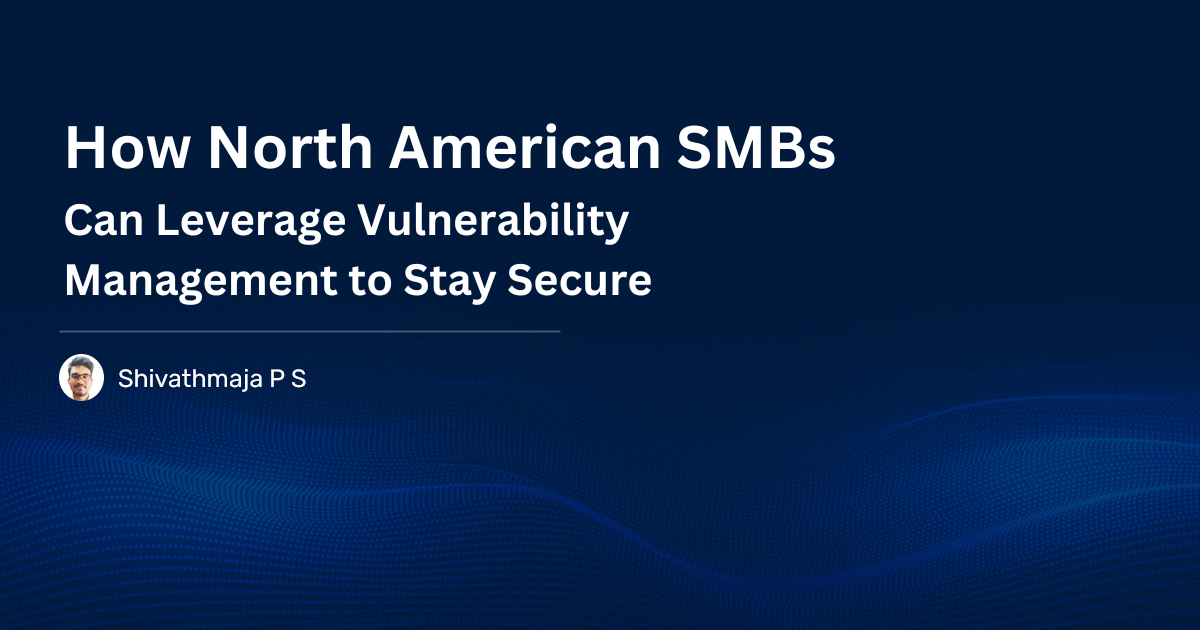Stopping cyberattacks isn’t easy, but preventing them can be if you properly implement vulnerability management. However, managing vulnerabilities can be daunting, and small and medium-sized businesses (SMBs) around the world and in the North American region in particular are struggling. But why?
In this blog, we’ll explore the unique challenges faced by US SMBs, the importance of vulnerability management tool, best practices for implementing it, and a case study that illustrates its impact.
The Unique Challenges Faced by US SMBs
SMBs, especially in the US region, find themselves vulnerable to cyberattacks. Lot of critical factors come into play and the stats suggest the same too. Over the past few years, cyberattacks have doubled in number. But why?
Here are a few:
- Ransomware, Phishing, and a Rise in the Number of Risks and Threats:
Over the past few years, cyberattackers have shifted their focus to SMBs, especially in the US. With the unfortunate pairing of the rise in the number of risks, the problem has crippled these organizations. Ransomware and phishing attacks have increased drastically, too! Adding to the misery is that SMBs don’t have enough tools, manpower, or knowledge to combat these threats. - Limited Resources: Both Manpower and Tools:
As the name suggests, SMBs typically have ‘small’ IT teams and tighter budgets, making it difficult to invest in effective security measures and tools. Additionally, due to the lack of enough manpower, they can’t monitor and manage potential vulnerabilities continuously. Lastly, higher prices could give better tools, and the small IT teams just won’t be getting this protection. - Missing Proactive Measures:
Due to the lack of resources we covered previously, most SMBs take a reactive approach to cybersecurity, addressing issues once they appear. This lack of proactive measures means that attackers have a better chance to exploit the exposed risks. But the time taken would be high and potential threats can go undetected until it’s too late.
Why Should SMBs Have Vulnerability Management?
Vulnerability management is the solution that will stop the rise in cyberattacks on SMBs. It provides the proactive approach modern IT security teams need and, if done correctly, can handle the rise in risks, too!
Here are a few key reasons why!
- Proactive and Speedy Risk Detection:
The big differentiator for vulnerability management is that it can identify risks BEFORE they are exploited by hackers. This means that SMB IT and security teams have a chance to patch the security risk preemptively and reduce the chance of cyberattacks. - Improved Security & Cyberattack Prevention:
With proactive implementation comes a natural increase in the security posture. And due to the fact that security risks are mitigated early, there’s a higher chance of preventing cyberattacks with vulnerability management. - Better Cost Effectiveness
The cost of threat management tools is high, and the cost and impact of a cyberattack on an organization are incalculable. Vulnerability management is cheaper, easier to implement and just more effective compared to the other alternatives.
Best Practices for Best Results While Leveraging Vulnerability Management
Vulnerability management might be daunting at first, but here are some pointers you must keep in mind to get the best out of it!
- Must-have Features in Your Vulnerability Management Tool:
Real-time and speedy scanning, extensive risk database, integrated risk mitigation, and simple UI & report generation are some must-have features you should look for while evaluating vulnerability management solutions. These features will simplify, speed up and streamline your vulnerability management.
- Integrate & Automate:
Vulnerability management is more effective if a single tool performs detection, assessment, prioritization, and remediation. This bypasses the problems you face if you use siloed solutions and improves the impact of your vulnerability management process multiple-fold!
Leveraging Vulnerability Management: A Case-study
Ineffective and absent vulnerability management can potentially kill your organization. Here’s an example of a U.S. SMB that overcame the challenges we talked about earlier with effective implementation of vulnerability management. Let’s dig deeper.
Like many small businesses, this company operated with limited resources and an understaffed IT team. Over time, the backlog of undetected risks and patches rose, increasing the vulnerability debt. The danger was near if no action was taken.
The solution was obvious. The SMB invested in an integrated and automated vulnerability management solution that instantly got to work. Regular scans, quick prioritization, and integrated patching followed, and the impact was obvious.
The vulnerability debt was at an all-time low, the security posture was at an all-time high, and so was the morale of the IT and security team. With a solid foundation, the team was able to manage the rising risks and stop many cyberattacks!
Conclusion
The harsh truth is that the threat SMBs in the US are facing is as real as it can be. But limited budgets, lack of tools and manpower, and mis-investment in ineffective threat management tools have made it even worse.
Vulnerability management is the way forward, and proactive risk mitigation is the key to unlocking a cyberattack-free network.
Leverage proactive risk mitigation with SanerNow.


